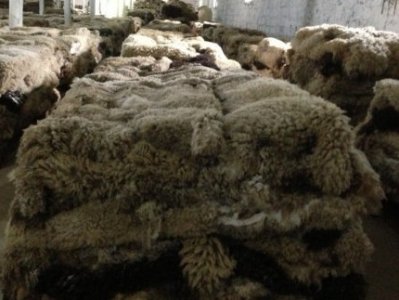Armenian Government Implements Temporary Ban on Raw Hide Exports to Boost Local Leather Industry and Increase Production Capabilities
The Armenian government has made the decision to prohibit the export of raw hides and skins from Armenia for a duration of 6 months. This ban specifically applies to the export of hides from large domestic livestock, poultry, deer, and untanned fish skins.
The reasoning behind this decision is that there is currently a demand for raw materials for hide processing within local companies in Armenia, and the processing base is not being fully utilized.
Armenian leather processing companies primarily engage in the initial stage of hide processing and export semi-finished products (known as wet blue). The objective is to increase the value of leather by adopting new processing technologies and improving production capabilities.
As a result of this ban, the government plans to redirect the manufactured products that are currently being exported from Armenia to countries that have the capacity to process hides.
In addition to impacting the export of hides, this ban also has repercussions for European textile companies that rely on Armenian producers for their supply.
Armenian producers primarily focus on the production of semi-finished leather and finished leather products. Finished leather products account for about 50% of the total production. The majority of production for tanneries in Yerevan and Gyumri is conducted within Armenia, while the Masis tannery exports a significant portion of its production (65% of the total) abroad.
The Yerevan and Masis tanneries primarily process hides from large livestock, such as bovine, whereas the Gyumri tannery specializes in untanned fish hides.
Currently, all tanneries have a combined capacity to process around 230-250 tons of raw hides (equivalent to 14,000-15,000 wet blue hides) per month. This results in the production of 3.5-4 million square centimeters of leather and 4,000-5,000 untanned fish hides, which amounts to 230-270 square centimeters of leather. However, if the tanneries were operating at full capacity, they could process approximately 335 tons of raw hides (equivalent to 20,000-22,000 wet blue hides) per month. This would result in the production of 5.5-6 million square centimeters of leather and 9,000-10,000 untanned fish hides, which amounts to 410-500 square centimeters of leather.
This ban on the export of raw hides and skins demonstrates the Armenian government’s commitment to bolstering the local hide processing industry and maximizing the value of its leather products. By redirecting exports to countries with stronger processing capabilities, it aims to stimulate growth and innovation within the Armenian leather sector.
Source: NEWS.am


